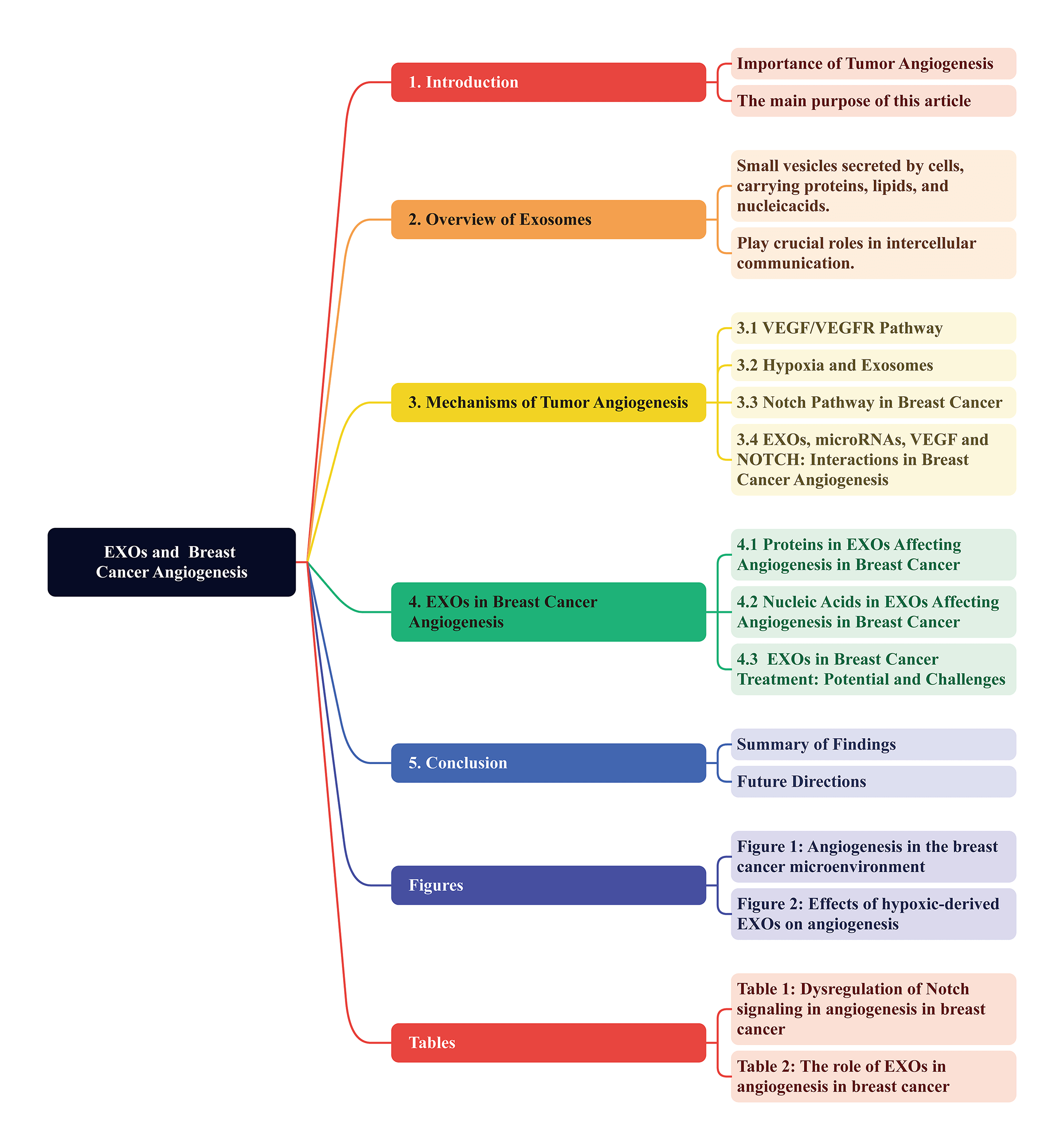 Open Access
Open Access
REVIEW
Effects and mechanisms of exosomes in microenvironment angiogenesis in breast cancer: An updated review
1 Department of Blood Transfusion, West China Hospital, Sichuan University, Chengdu, 610041, China
2 Department of Blood Transfusion, West China Tianfu Hospital, Sichuan University, Chengdu, 610000, China
* Corresponding Author: CHUNYAN HUANG. Email:
Oncology Research 2025, 33(6), 1323-1334. https://doi.org/10.32604/or.2024.059113
Received 28 September 2024; Accepted 02 December 2024; Issue published 29 May 2025
Abstract
Exosomes (EXOs) play an important role in the progression of breast cancer. EXOs, with a diameter of approximately 100 nm, have a simple structure but diverse functions, and can affect the development of breast cancer through signal transduction and molecular transfer, etc. Angiogenesis provides nutrients for the growth and metastasis of breast cancer and is a crucial part of tumor progression. The mechanism of tumor angiogenesis is complex. The VEGF/VEGFR pathway promotes angiogenesis by regulating the activities of ECs. Hypoxia, a common feature in the tumor microenvironment, as a key regulator, can affect angiogenesis in multiple aspects such as the transfer of miRNAs in EXOs, protein transport, extracellular matrix regulation, and metabolic adaptation. The Notch pathway has a bidirectional regulatory role in breast cancer angiogenesis, and different molecules can promote or inhibit angiogenesis. EXOs secreted by breast cancer cells are rich in angiogenic factors. Components such as proteins and nucleic acids in EXOs can affect the functions and behaviors of vascular ECs, thereby influencing breast cancer angiogenesis. Research on the mechanisms of EXOs in breast cancer angiogenesis is of great significance for tumor treatment. EXOs are expected to become biomarkers for breast cancer diagnosis/prognosis. This research provides potential targets for in-depth understanding of the biological characteristics of breast cancer and the development of new treatment strategies.Graphic Abstract

Keywords
Cite This Article
 Copyright © 2025 The Author(s). Published by Tech Science Press.
Copyright © 2025 The Author(s). Published by Tech Science Press.This work is licensed under a Creative Commons Attribution 4.0 International License , which permits unrestricted use, distribution, and reproduction in any medium, provided the original work is properly cited.


 Submit a Paper
Submit a Paper Propose a Special lssue
Propose a Special lssue View Full Text
View Full Text Download PDF
Download PDF Downloads
Downloads
 Citation Tools
Citation Tools